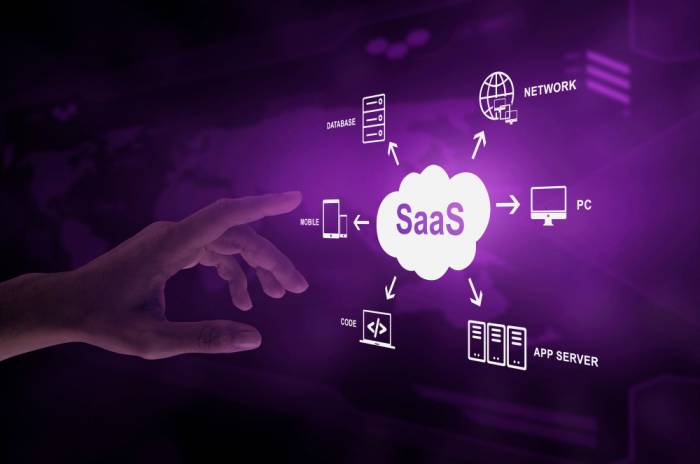The software-as-a-service (SaaS) industry has exploded recently. SaaS allows companies to deliver applications over the internet rather than having users install software on their devices. The subscription-based model offers a steady, recurring revenue stream.
Starting a SaaS company could be a great business option if you have an idea for a web or mobile application. Here is a step-by-step guide on how to start your own SaaS company.
What is SaaS?
SaaS stands for “software as a service.” SaaS companies provide access to an application over the Internet. Users pay a subscription fee to use the software. Popular examples include Salesforce, Slack, Dropbox, and Zoom.
Benefits of SaaS Model
There are many advantages to the SaaS model for both providers and users:
- Recurring revenue – Subscriptions mean income month after month
- Scalability – It’s easy to add more users without extra costs
- Lower barriers to entry – Users don’t need to install anything to use it
- Mobile accessibility – Users can access SaaS from any device or location
Difference Between SaaS and Software Company
The main difference between a SaaS (Software as a Service) company and a traditional software company lies in how they deliver their products and services to customers.
1. Delivery Model:
- SaaS Company: Software is delivered over the internet via cloud platforms. Users pay for access on a subscription basis.
- Software Company: Software is installed directly onto devices from purchased licenses. Users pay upfront.
2. Revenue Model:
- SaaS: Revenue comes from ongoing subscription fees, usually monthly or annual.
- Software Company: Revenue generated from one-time license purchases and version upgrade purchases.
3. Pricing Approach:
- SaaS: Typically priced per user per month based on feature tiers.
- Software Company: The one-time cost is set by the number of licenses and additional fees for maintenance/support contracts.
4. Upgrades:
- SaaS: Upgrades are seamless and automatically delivered via the cloud platform.
- Software Company: Users must manually download and install any new versions released.
5. Scalability:
- SaaS: Very scalable. Adding new users is quick and low cost.
- Software Company: Adding users requires purchasing additional licenses, downloading larger server capacity, etc.
6. Accessibility:
- SaaS: Accessible from any internet-connected device. Supports mobility.
- Software Company: Typically accessed on specific computers with locally installed software. Less portable.
How to Start a SaaS Company?
1. Validate Your SaaS Idea
You need an idea that fills a real need in the market. Avoid creating a “me too” product that duplicates what already exists.
Identify Issues to Solve
Think about pain points you have experienced yourself or heard clients and colleagues complaining about often. Can you solve that issue with software?
Research the Market:
Are competitors offering something similar, or is this an untapped space? Research the related keywords to find opportunities.
Survey Potential Users
Create a simple questionnaire to measure interest and see if people would pay for your SaaS solution.
2. Create a Business Plan
Every successful business needs a solid plan covering key details on goals, target customers, projected growth, and costs.
Executive Summary
Briefly explain your mission, product offering, target market, competition assessment, team credentials, projected revenue, and funding needs.
Company Overview
Describe your proposed management team and credentials, ownership structure (LLC, corporation, sole proprietorship), and any regulatory issues specific to your industry.
Market Analysis
Research the size of your addressable market, including growth trends and common characteristics of target users. Identify competitors and explain how you will differentiate.
Financial Plan and Projections
Provide specifics on upfront costs, ongoing operational expenses, pricing models, and revenue forecasts. Detail key assumptions used for projections.
3. Choose Technology Stack
One benefit of SaaS is utilizing cloud-based tools to manage infrastructure and development.
Find a SaaS Platform
Services like AWS, Google Cloud, Salesforce Heroku, and Azure allow you to build apps without managing physical servers. Choose one tailored to your needs.
Select SaaS Tools
In addition to a core platform, utilize tools for billing management, identity verification, analytics, marketing automation and more. Zapier can connect various SaaS tools.
Hire Developers
Unless you or your co-founder will build the software, you must hire dedicated developers. Clearly explain specifications so they can provide accurate cost and timeline estimates. Quality assurance testing is also key.
4. Fund Your SaaS Company
Very few SaaS startups are profitable in the early stages. You need capital to pay developers, market the solution, and keep operations running as you acquire users.
Bootstrap
Bootstrapping means self-funding your company through personal savings, loans, or credit cards. This gives you full control but will limit growth velocity.
Crowdfund
Running a crowdfunding campaign lets you validate demand while raising initial capital. Offer tiered rewards to generate excitement.
Seek Investors
Angel investors and venture capitalists can provide larger amounts of funding. Be prepared to give up equity in exchange for capital to accelerate growth.
5. Design and Launch MVP
Don’t wait until every feature is perfect. Get a minimally viable product (MVP) to market quickly to demonstrate its capabilities and start collecting user feedback.
Build Core Functionality
Prioritize must-have features and cut out nice-to-haves for the first release. Focus on solving one pressing problem exceptionally well.
Optimize Usability
Good UI/UX design ensures a positive first experience that fosters user retention. Emphasize ease of onboarding and intuitive navigation.
Release and Iterate
Once launched, closely monitor usage metrics and user feedback. Rapidly update based on issues reported and suggestions provided by early adopters.
6. Market and Sell Your SaaS
You need a multi-channel marketing strategy focused on your target customer profile. Tactics should map to each stage of the buyer’s journey.
Content Marketing
Blog posts, ebooks, webinars, etc., attract visitors, establish expertise, and move leads toward becoming customers.
SEO
Ranking high in search engines increases website traffic. Keyword research and metadata optimization are key.
Paid Ads
Well-targeted pay-per-click and social media campaigns create new leads. Retarget past site visitors to accelerate deals.
Email Nurturing
Segment your list by lead stage. Create email workflows that provide value and guide subscribers toward becoming customers.
7. Develop Client Relationships
Satisfied clients who find your SaaS indispensable for their work will gladly renew subscriptions long-term.
Onboarding
Set expectations on implementation timelines, training resources, and key success metrics. Assign a customer success manager to each new client.
Ongoing Support
Provide multiple channels for technical troubleshooting and general inquiries. Prioritize quick response times. Consider in-app messaging and chatbots.
Account Management
Set quarterly check-ins to discuss renewal, additional features needed, suggestions for improvement, and referral opportunities. Send satisfaction surveys periodically.
8. Optimize and Scale
As your SaaS company matures, continually fine-tune operations and expand your customer base.
Analyze Metrics
Key performance indicators like customer acquisition cost, lifetime value, churn rate, and net promoter score offer insights on sustainable growth.
Automate Workflows
Tools like Zapier eliminate redundant manual processes involved in delivering and billing your SaaS product.
Expand Offerings
Meeting the broader needs of your clients may involve vertical market customizations or integrations with other tools through APIs.
In Closing
Launching any startup takes significant research, planning, and effort. The subscription-revenue model of SaaS businesses offers terrific potential if you can power through the initial stages. Utilize this guide covering idea validation through scalability best practices as your roadmap to building a thriving software company!





